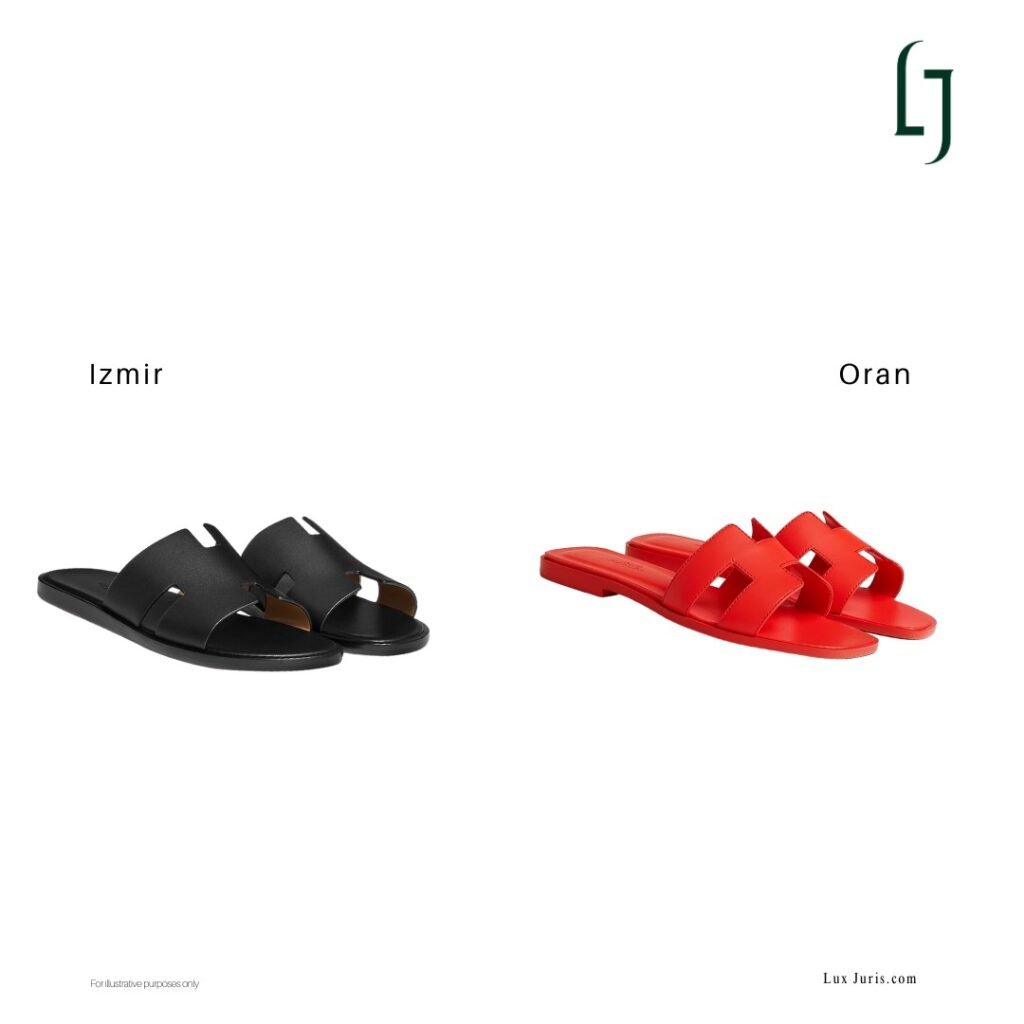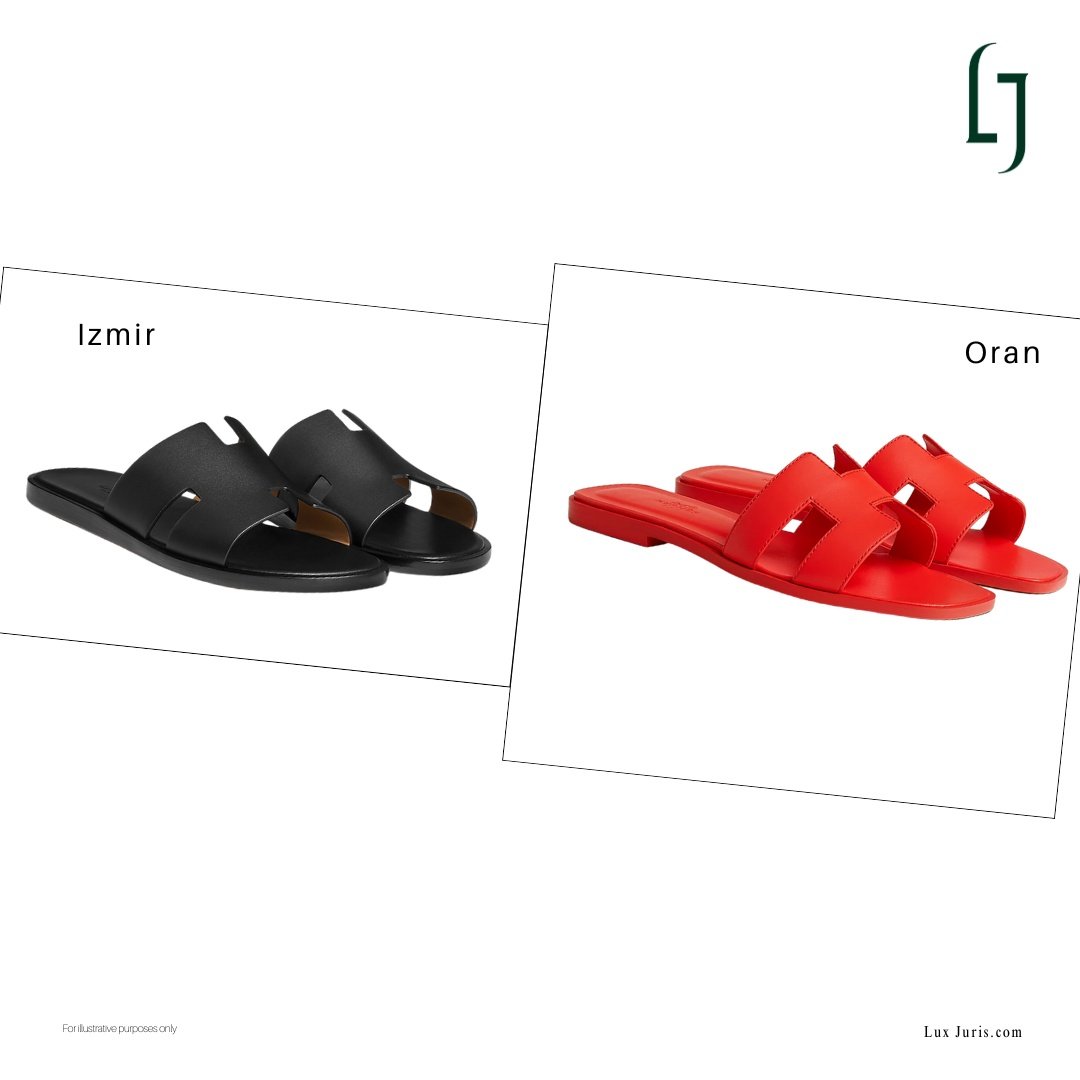On July 11, 2025, the Paris Court of Appeal has delivered a resounding affirmation of creative protection within the luxury sector, partially upholding Hermès International’s claims against footwear imitators in a closely watched intellectual property dispute. The court confirmed copyright infringement for two specific mule models that copied the signature “H” shape of Hermès’ well known Oran sandals and their masculine Izmir version. The decision adds weight to how French courts assess originality in functional fashion pieces and shows the value of clear evidence of creative inspiration.
The ruling followed years of litigation after Hermès discovered that retailer Mapinko and supplier Mulanka were selling imitation sandals through the boutique “Sabatyk.” This led to a legal fight that ended in this appeal decision.
The Dispute’s Origin
The conflict began in June 2020 when a TV programme showed Mapinko’s boutique selling sandals very similar to Hermès’ designs. An anti-counterfeiting raid confirmed Mulanka as the supplier. Hermès asserted rights under French copyright law and a 1997 registered design. The luxury presented compelling evidence about the creation of the Oran and Izmir sandals, including [H] [W]’s geometric style inspired by Ndebele tribal art.
Despite a prior 2023 ruling by the Paris Judicial Tribunal that recognized only limited infringement with minimal damages, Hermès pursued this appeal seeking wider recognition of violations across multiple product lines and substantial compensation for commercial harm and weakening of its brand.
Court Recognition of Artistic Value
Central to the court’s reasoning was its rigorous analysis of whether these functional fashion items merited copyright protection under Article L.113-1 of France’s Intellectual Property Code. The appellate judges determined that Hermès successfully demonstrated the sandals bore the “personal stamp” of their creator, whose testimony about drawing inspiration from African tribal paintings proved decisive.
Testimonies detailed how the minimalist “H” cutout featuring precisely positioned rectangular notches, clean leather straps, and flat soles transcended mere functionality to become artistic expression. Crucially, the court dismissed Mulanka’s argument about generic prior art, noting that its 1966 Sears catalog evidence displayed “X”-shaped straps and curved soles fundamentally distinct from Hermès’ protected designs.
Analysis of Infringement
Using a strict “overall visual impression” test, the court reached different conclusions for different models. For models 1155 and 1180, it found infringement because they copied the distinctive “H” shape, rectangular cut-outs, and proportions of Hermès’ sandals, even if there were small changes like curved notches or visible stitching.

By contrast, models LS82, LS182, 1037, and 1173 were not found to infringe because their designs had notable differences such as “X”-shaped straps, rounded edges, rhinestones, or padded soles, giving them a different overall look. The court made clear that protection applies only when the essential character of the original design is reproduced, not when a product just resembles its style.
Damages and Other Claims
The court systematically addressed Hermès’ additional claims, rejecting design model infringement allegations because visual differences in finishes and textures prevented identical overall impressions under Article L.513-5 of the Intellectual Property Code.
Unfair competition arguments were deemed unnecessary to examine after the partial copyright victory.
Damages were set at €25,282.35, sixteen times more than the first ruling but far less than the €650,000 requested. The amount covered €15,282 for lost profits, €5,000 for harm to brand image caused by low-priced copies, and €5,000 for the defendants’ savings from avoiding research and design costs,
- €15,282 for documented lost profits from sales,
- € 5,000 for moral harm caused by brand dilution from bargain-priced knockoffs,
- € 5,000 representing Mulanka and Mapinko’s unjust savings from avoided research and development costs.
What the Ruling Means
The ruling is significant for luxury brands facing frequent imitation. Mulanka was ordered to stop selling the infringing sandals, with a € 500 penalty for each unit sold after a two month grace period. Hermès secured the damages as a claim in Mapinko’s bankruptcy, with Mulanka responsible for full payment but allowed partial recovery from Mapinko.
Beyond immediate remedies, the verdict implies that unregistered copyrights based on documented artistic expression may offer stronger, and potentially longer-lasting, protection than formal design registrations.
Source:
